Morocco, a land of mesmerizing landscapes and rich cultural heritage, offers travelers an unforgettable experience. From vibrant cities and ancient medinas to breathtaking deserts and mountain ranges, the country is a treasure trove of attractions. Top tourist attractions in Morocco include the Sahara Desert, Marrakech’s Jemaa el-Fnaa, Atlas Mountains, Fes Medina, and Chefchaouen. Plan your visit and apply for a Morocco visa for a smooth journey.
The diversified geography bestowed Morocco with different kinds of climatic conditions.
On the whole, Morocco should best be visited in spring-from March to May-and in autumn-from September to November-when weather conditions are relatively moderate.
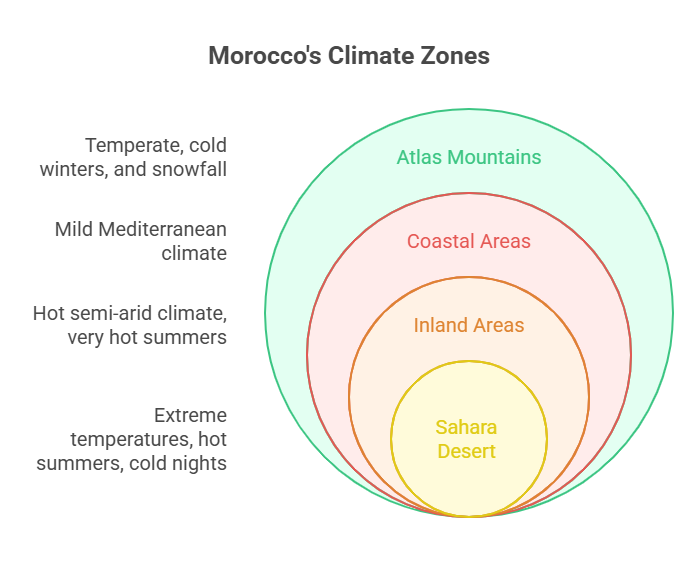
Here are the top 10 tourist attractions to visit in Morocco
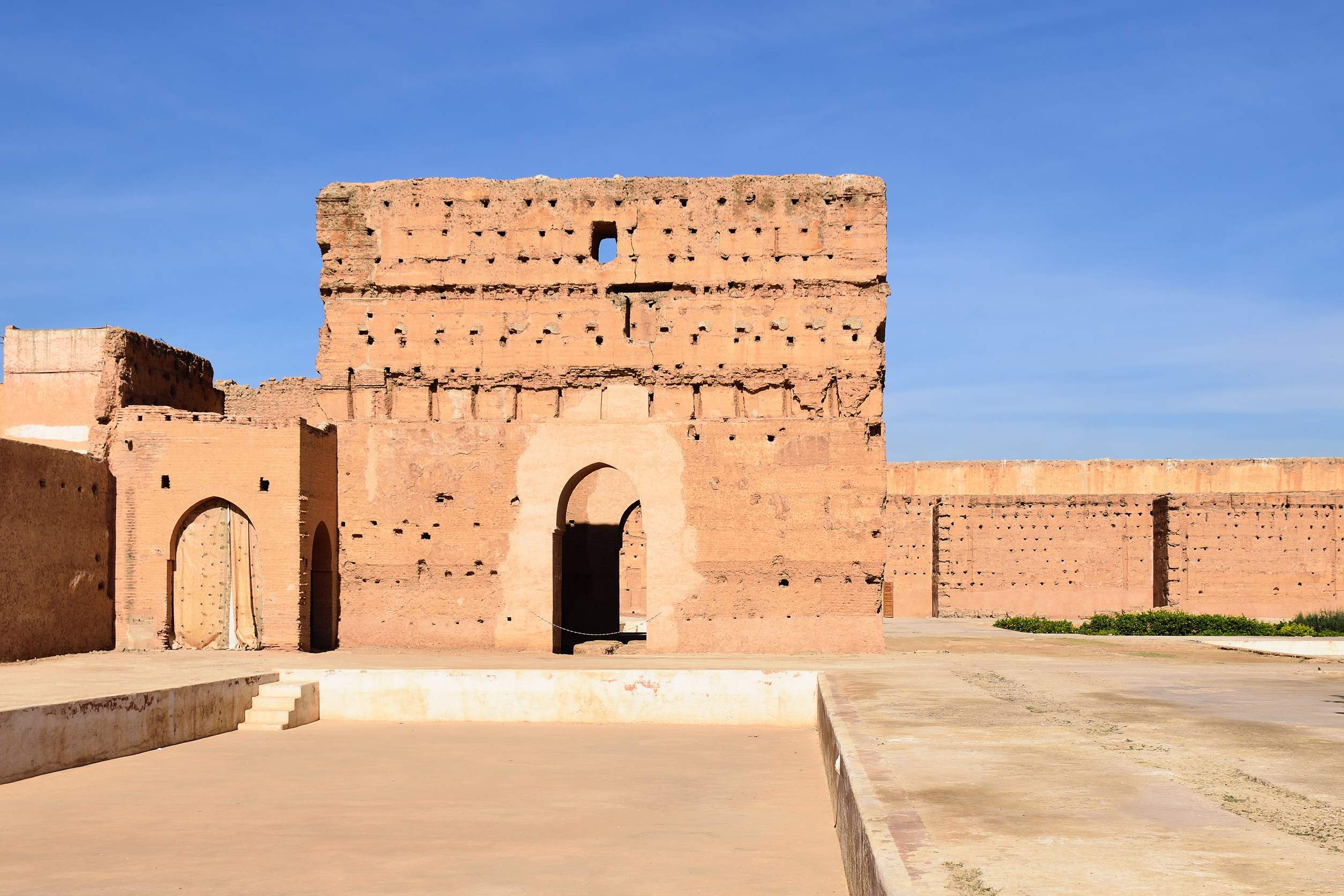
Marrakech is called the "Red City" due to the general color of buildings-hues of red, one of the most historical places within the country. Bustling souks, the scent of spices in the air, and the famous square of Jemaa el-Fnaa-the perfect combination of experiences for visitors. One will also be fascinated by the architectural miracles. The key attractions includes:
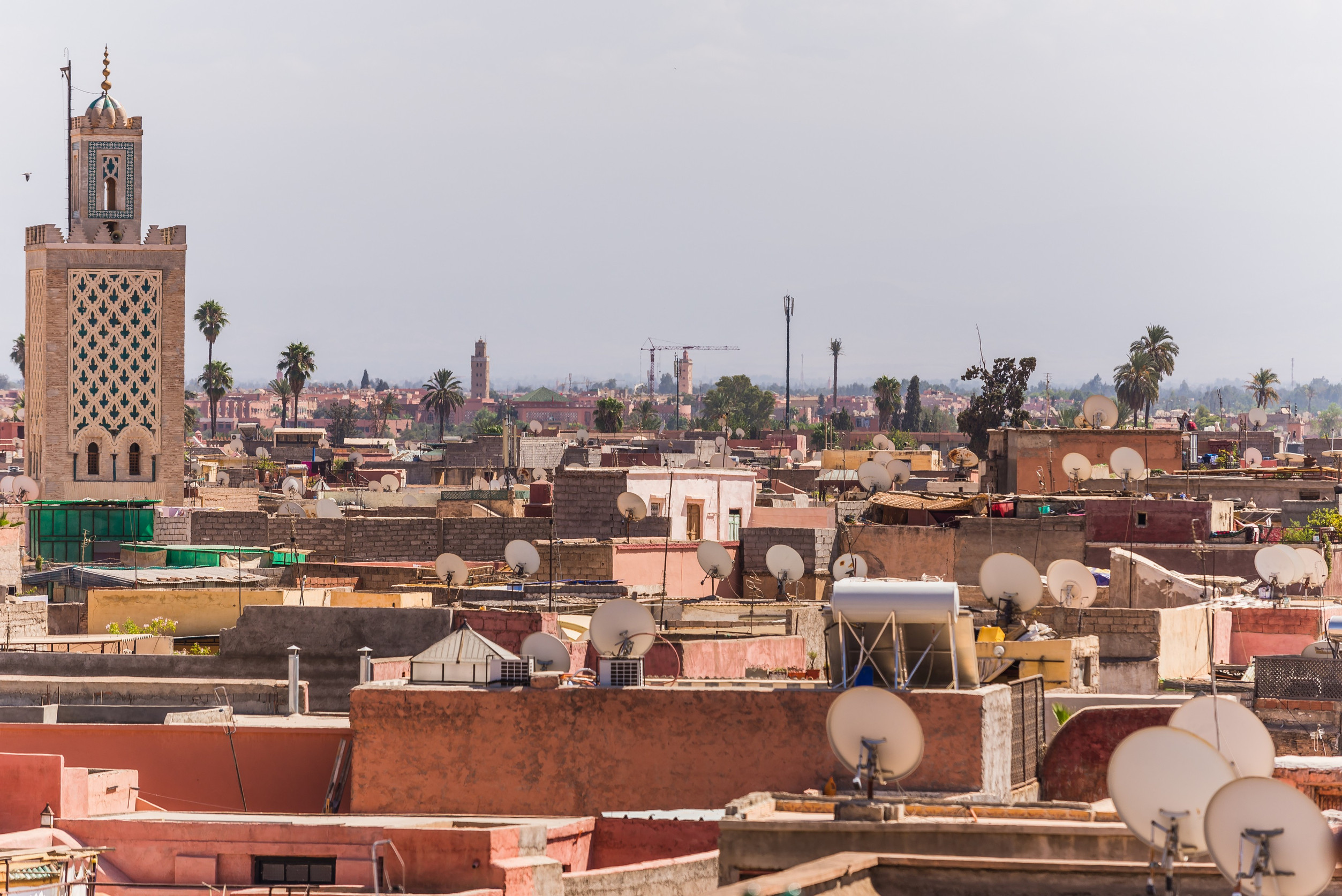
Fez is Morocco's oldest imperial city and is steeped in tradition and historical buildings. Its old medina, Fes el-Bali, is a UNESCO World Heritage Site and includes teeming souks, mosques, and madrasas. Visitors can delve into the ancient tanneries and intricate Moroccan architecture that create the rich history of this city.
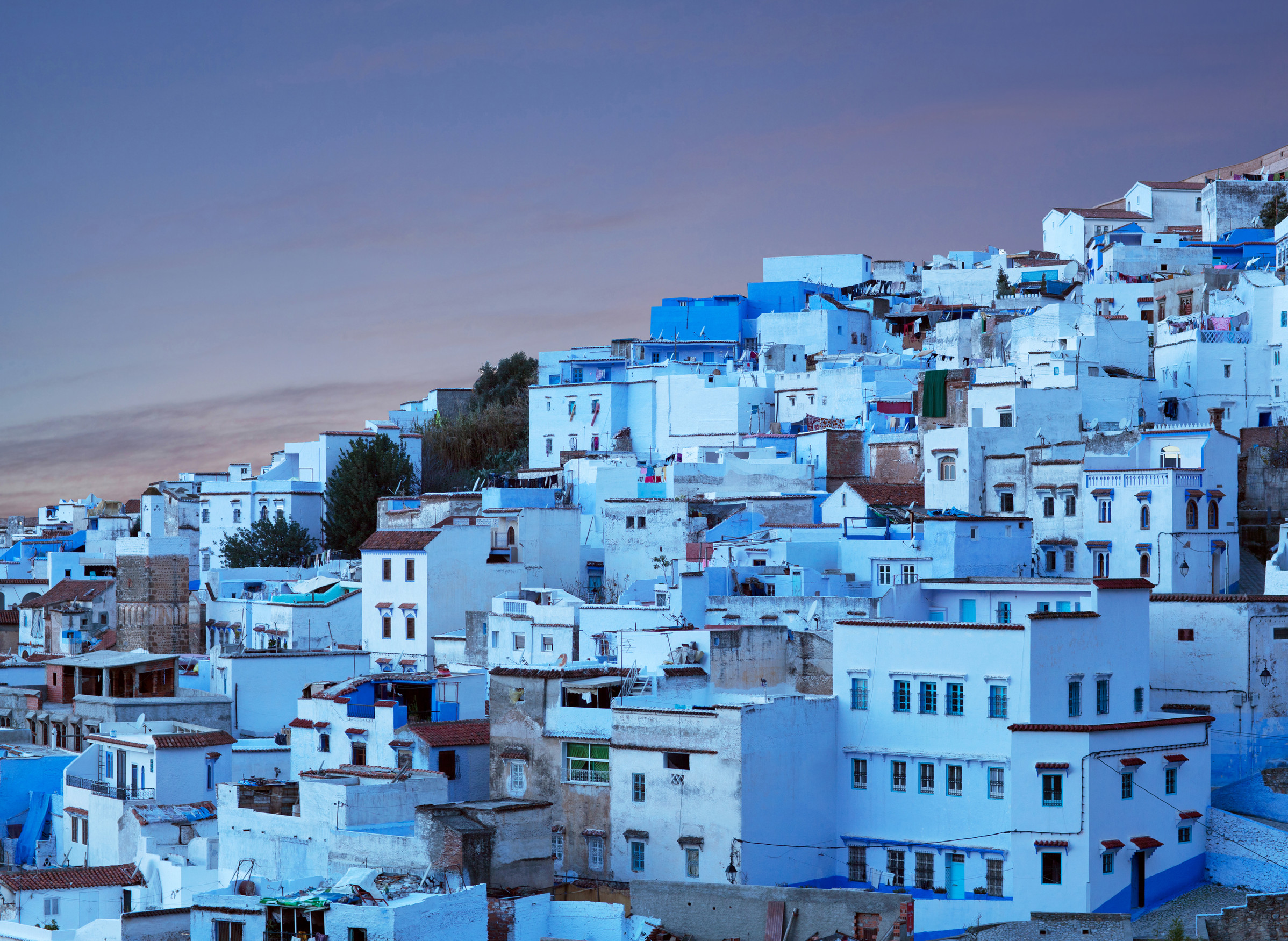
Nestled in the Rif Mountains, Chefchaouen is a city famous for its blue-painted streets and laid-back atmosphere. This picturesque town offers a quiet getaway with its quaint alleys, colorful markets, and panoramic mountain views. It is a photographer's and nature lover's paradise, with the added bonus of hiking trails and access to the beautiful Akchour Waterfalls.
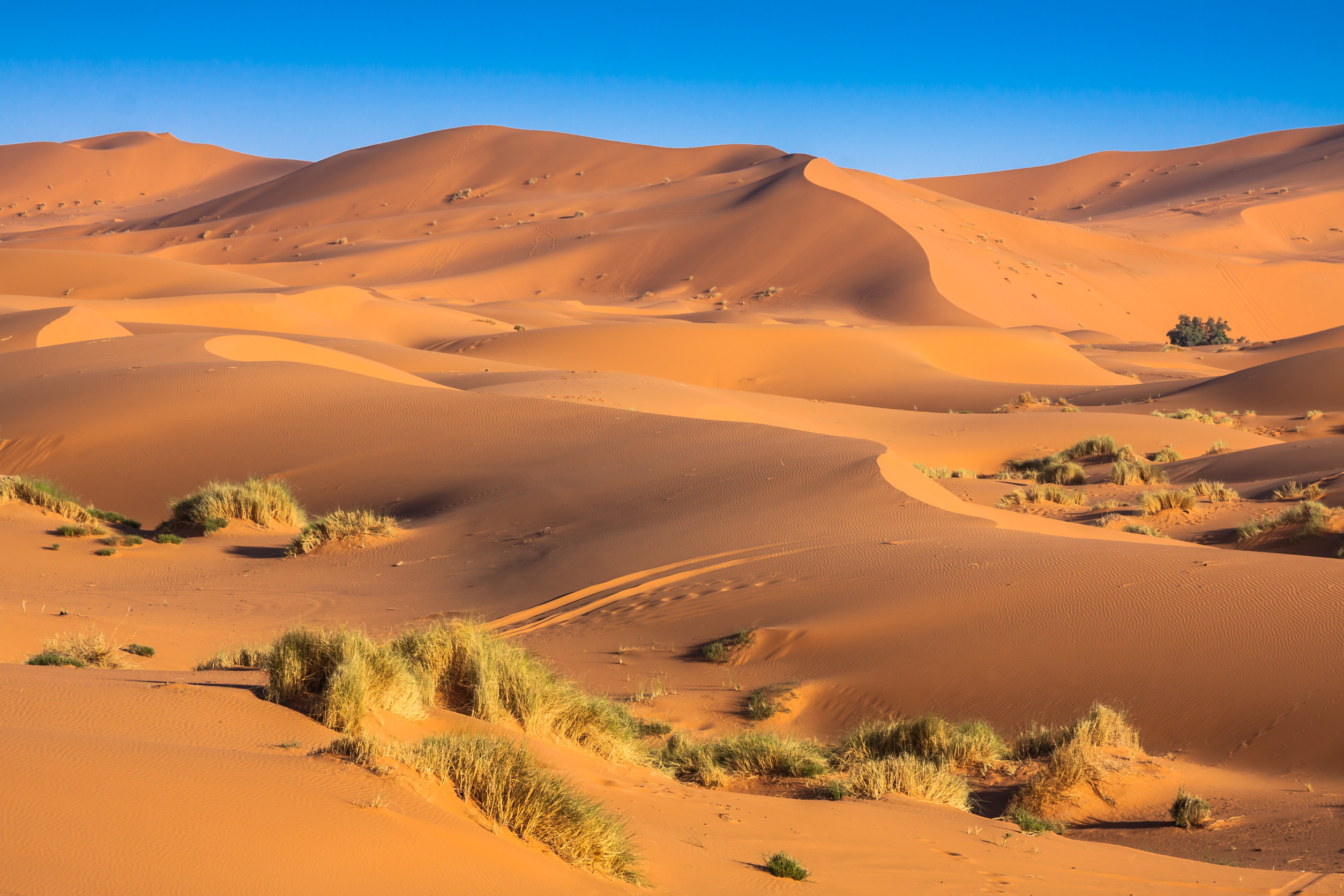
No tour in Morocco is complete without a dip in this Sahara magic. The desert provides one heck of an adventure, whether taking camels across golden dunes of sand or spending nights under star-filled skies. Besides, there's the opportunity to explore vast expanses of scenery, visit Berber villages, and watch fantastic sunrises and sunsets over the sand dunes
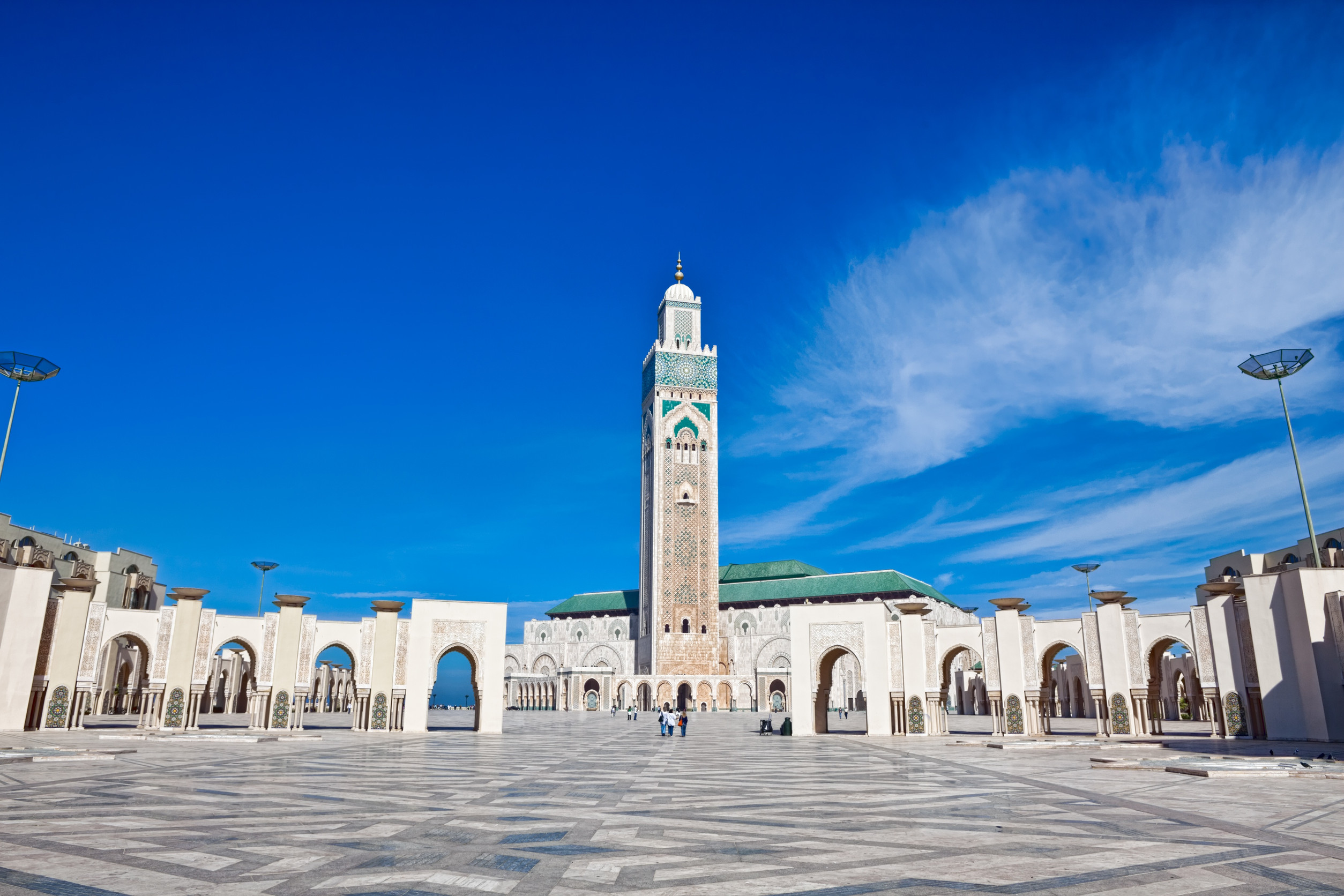
Casablanca, the economic capital of Morocco, effectively merges modernity with historic charm. This city impresses any visitor with stunning architecture, including one of the biggest mosques in the world, the Hassan II Mosque, and by the vibrant nightlife. Visitors can enjoy leisure walks along the scenic Corniche, taste traditional and contemporary cuisine, and visit busy markets and cafes.
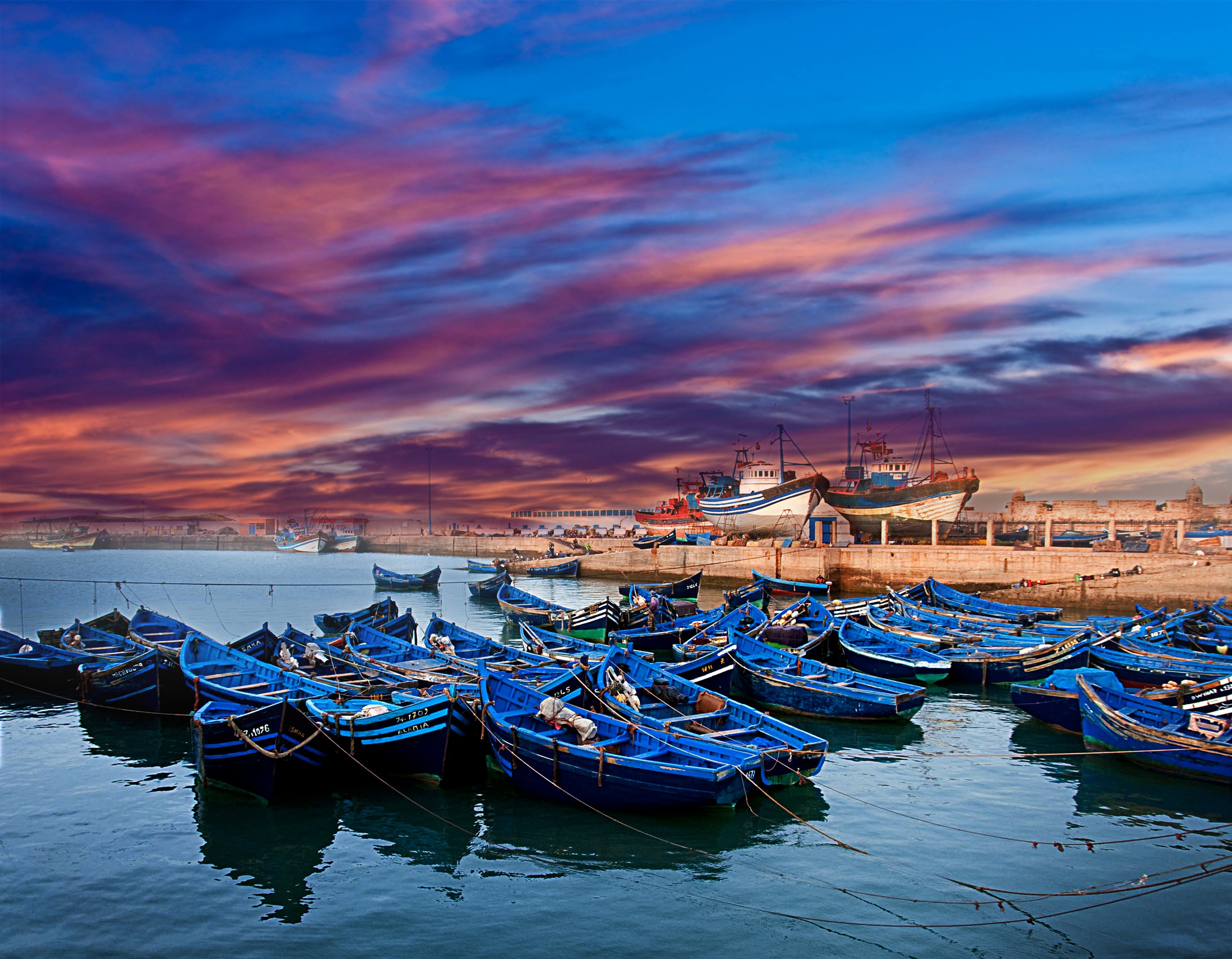
This laid-back seaside resort town is good for those who set up a combination of history, culture, and relaxation in their schedule. Famously known for its historic medina, Essaouira-a UNESCO World Heritage Site-boasts narrow streets so enchanting, dynamic blue-and-white buildings, and a busy working fishing port. The resort town also faces a beautiful coastline, perfect for windsurfing and taking quiet evening walks by the sea, with fresh seafood to taste and local art shops.
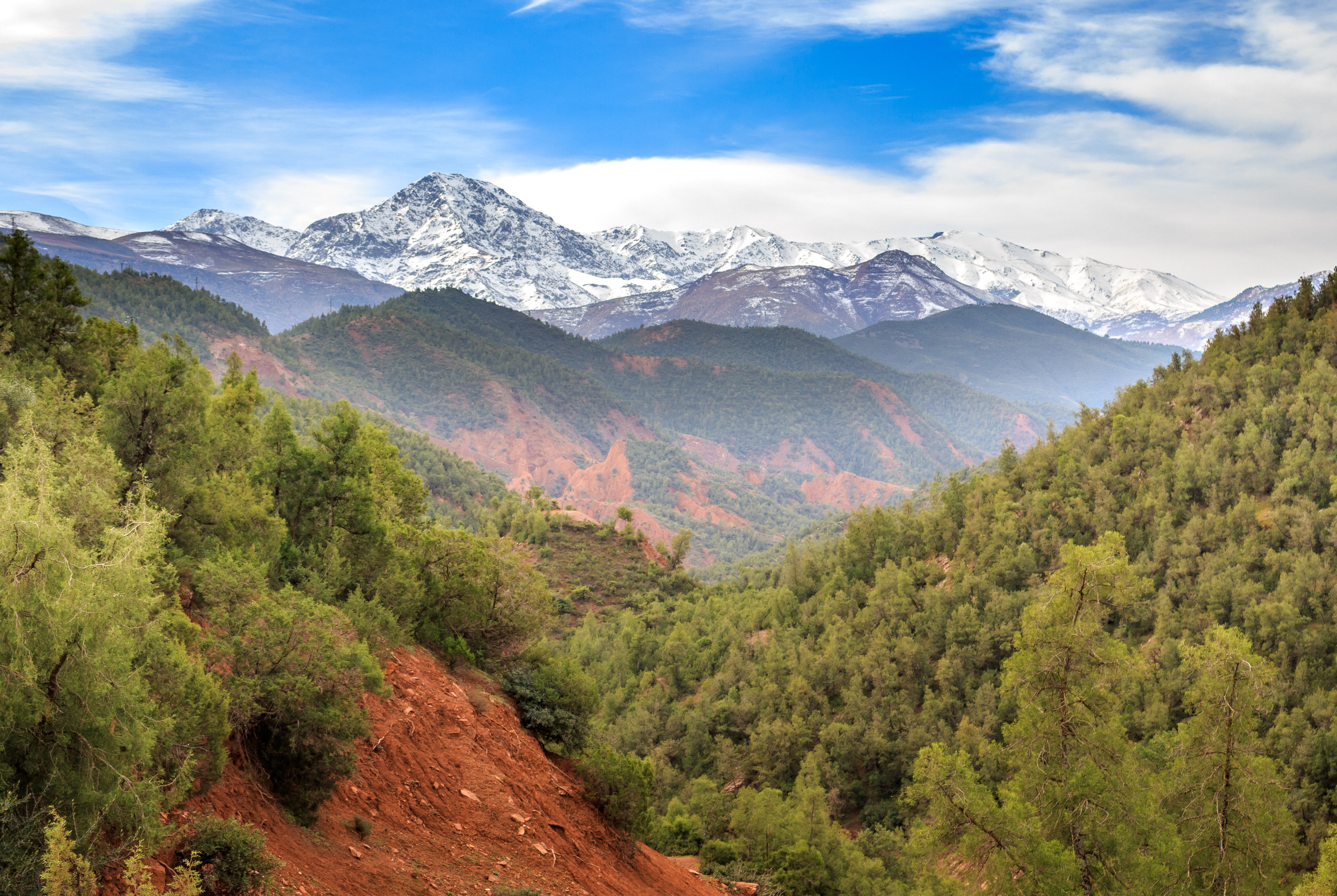
The Atlas Mountains run right through Morocco, creating an ideal area for outdoor adventures and stunningly beautiful landscapes. The mountains-with their snow-capped peaks, merging into rugged terrain and picturesque valleys-are a haven for hikers, trekkers, and nature lovers alike. One can explore traditional Berber villages, trek to the summit of Mount Toubkal, or simply enjoy the breathtaking landscapes.
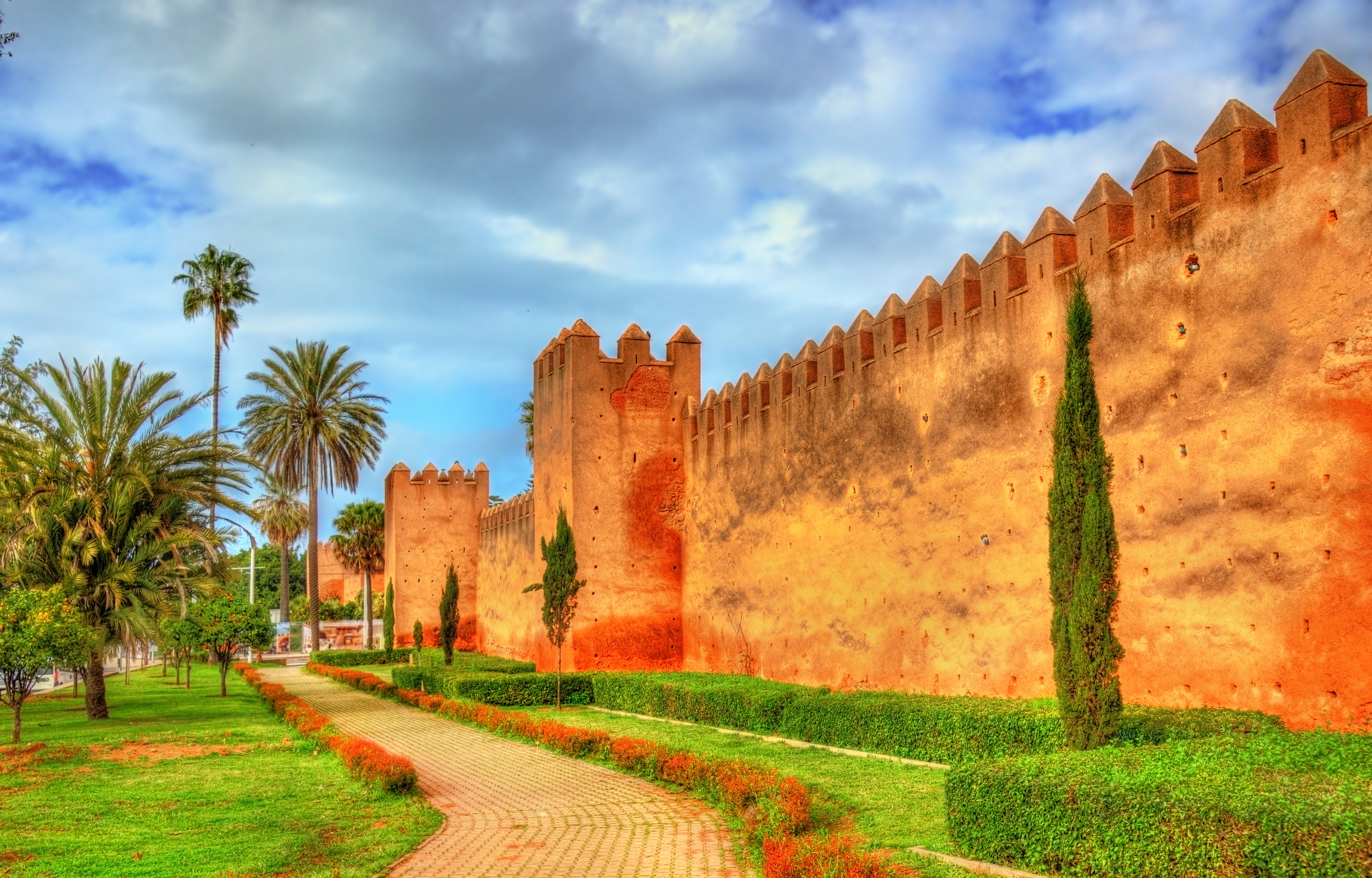
Rabat, Morocco’s capital, offers a mix of historical sites and modern attractions. The city is home to impressive landmarks like the Hassan Tower, the Royal Palace, and the ancient Kasbah of the Udayas. Visitors can explore its peaceful gardens, stroll along the boulevards, and enjoy the city's coastal beauty while discovering its rich cultural heritage.
Often overshadowed by Fes and Marrakech, Meknes is a hidden gem with a rich history. The city is known for its grand gates, such as Bab Mansour, and its impressive medina, which is a UNESCO World Heritage Site. Visitors can explore the royal stables, the Mausoleum of Moulay Ismail, and enjoy the tranquil atmosphere of this lesser-known yet captivating imperial city.
Tangier, located at the crossroads of Europe and Africa, is a melting pot of cultures. Its vibrant medina, historical architecture, and scenic coastline make it a unique blend of Moroccan and European influences. Visitors can explore the city's bustling markets, enjoy panoramic views from the Kasbah, and experience the blend of modernity and tradition that defines this coastal city.
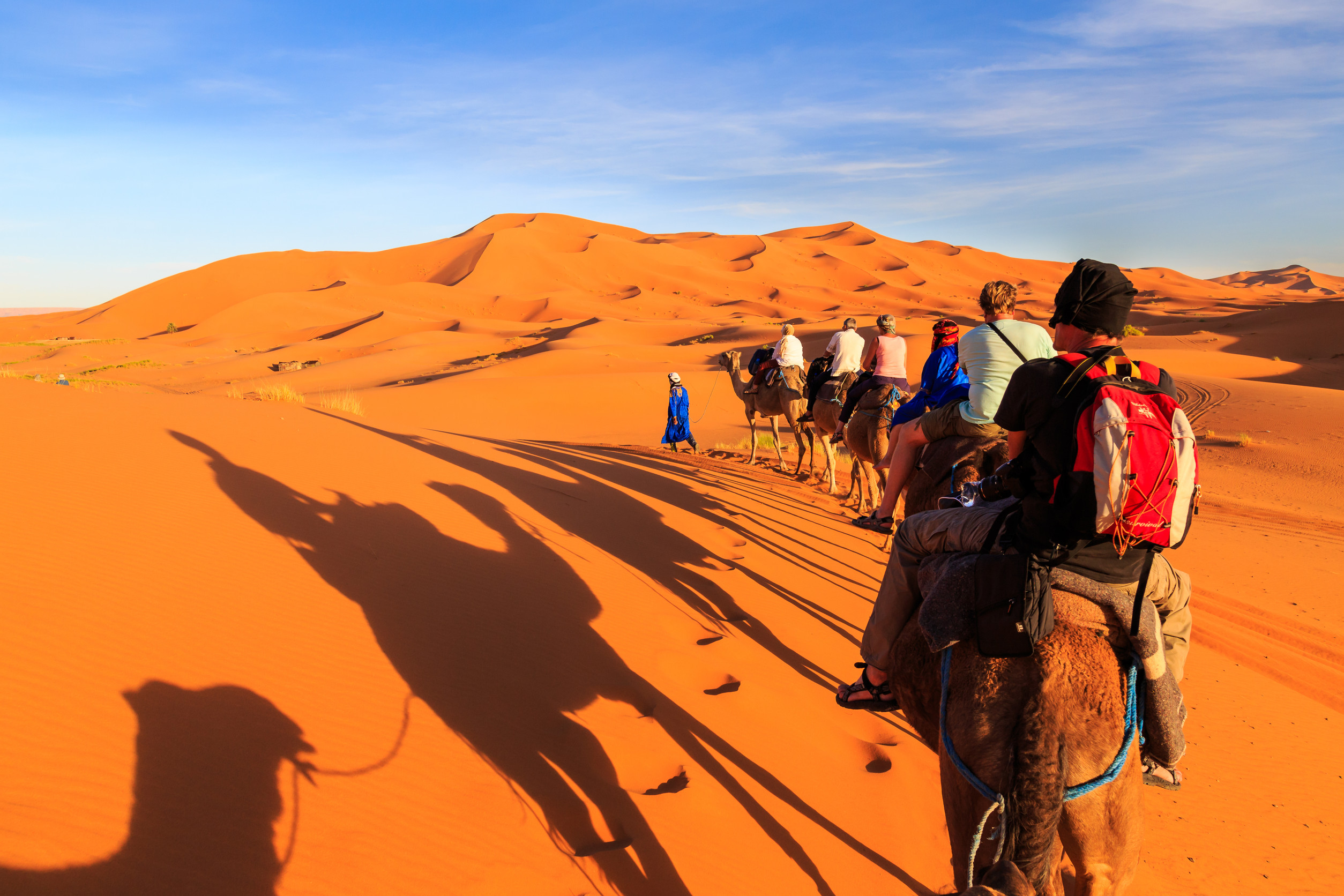
Morocco is a dream destination for all those who love adventure. It offers a variety of exciting outdoor activities in different landscapes. Top adventures include:
Go on a camel trek over the Sahara's towering golden dunes. Travelers can take trips of a day or several days, see gorgeous sunrises and sunsets, sleep in traditional Berber tents under starry skies, and enjoy the peculiar peacefulness of the desert.
The Atlas Mountains offer a haven for trekkers with their rugged peaks, stunning valleys, and Berber villages. From casual walks up to the summit of Mount Toubkal, North Africa's highest peak, to multi-day treks through the scenic routes like the Toubkal National Park, Morocco offers options for all levels of hikers.
With its extensive Atlantic coastline, Morocco is a dream for surfers, especially those who are of the beginner or intermediate type. Places like Taghazout, Essaouira, and Agadir are popular spots that offer waves to suit all levels of surfers, surf schools, and cafes to chill out at after a long day in the water.
During the tour in Morocco, make sure eco-lodges or similar environmentally-friendly places are used; use public means of transport, such as walking, to minimize carbon emissions. Respect local traditions and avoid buying things made from threatened species. Undertake activities that can help protect natural resources. Buy handicraft items directly from the markets or cooperatives from artisans so that the returns are given equitably to the producer. By following these simple practices, you will be able to enjoy Morocco responsibly, while contributing to its preservation and supporting local communities.
Disclaimer: This guide is for informational purposes only, and though the best most updated suggestions are provided, travel conditions or requirements for safety might change. It's always best to check with the current situation of relevant embassies or a travel agency before you go.
Step1: Complete the online application by entering your passport details.
Step2: Make the payment online using a credit card.
Step3: Check your email for the payment confirmation and receive your e-visa.